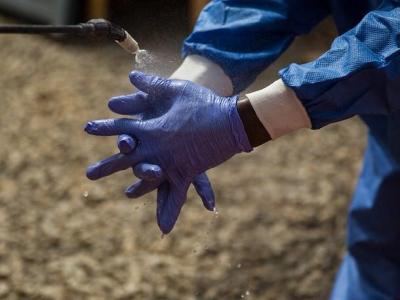Study finds antibiotic time-outs not tied to lower overall antibiotic use
Implementation of a pharmacist-led antibiotic time-out (ATO) at an academic medical center was feasible and well-accepted, but did not change overall antibiotic use, researchers from the University of Nebraska Medical Center reported today in Infection Control & Hospital Epidemiology.
In the two-phased cluster-randomized study, three academic inpatient medical teams were randomly selected in the first phase (ATO-A) to implement the pharmacist-led time-out, in which initial antibiotic therapy in a patient is reassessed, and three teams maintained usual care (UC-A). In phase B, the usual-care teams implemented the ATO process (UC ATO-B), while ATO use continued in the other group (ATO-B).
The study, conducted from November 2014 through February 2015, included all patients who were treated by the teams and received antibiotics. The researchers targeted two ATO points: early (less than 3 days after antibiotics were initiated) and late (from 3 to 5 days after antibiotics were started).
In total, 290 ATOs were documented (181 early, 87 late, and 22 subsequent) among 538 admissions. The most common ATO recommendations were narrow therapy (148 of 290), no change (124 of 290), and change to oral (30 of 290).
Measured in days of therapy (DOT) per 1,000 patient-days (PD), overall antibiotic use was not different between any of the groups (P = .51), although intravenous (IV) levofloxacin use decreased in the UC group after ATO implementation (49 DOT/1,000 PD vs 20 DOT/1,000 PD; P = .022). The ratio of oral to IV DOT was lower in the UC group than in any of the ATO groups (P = .032). The researchers detected no differences in mortality, length of stay, readmission, Clostridioides difficile infection, or antibiotic adverse events.
While email surveys indicated the ATO process was well-accepted, the authors of the study say the findings mirror those of other studies that have found that ATOs have no impact on overall antibiotic use. But they also said that not that all studies of ATOs have been conducted in hospital with active antibiotic stewardship programs (ASPs).
"An ATO may be beneficial when an active ASP is absent or the program lacks [infectious disease] expertise, although ATOs have not been studied in these situations," they wrote.
Aug 20 Infect Control Hosp Epidemiol abstract
Use of common antibiotics linked to resistant bacteria colonization
A nationwide case-control study in Denmark found that the risk of colonization with multidrug-resistant bacteria (MRB) was associated with consumption of commonly used antibiotics for at least 2 years after treatment, Danish researchers reported today in the Journal of Antimicrobial Chemotherapy.
Using data from the AB-RED (Antibiotic Resistance in Emergency Departments in Denmark) study and from a national register of antibiotic consumption, researchers from the University of Southern Denmark and Odense University Hospital compared 256 patients colonized with MRB—including extended-spectrum beta-lactamase–producing Enterobacteriaceae (ESBL-E), carbapenemase-producing Enterobacteriaceae, methicillin-resistant Staphylococcus aureus, and vancomycin-resistant Enterococcus—based on throat, nose, and rectum swabs and 4,763 control patients. They performed multivariate analyses to examine the association between antibiotic consumption and MRB colonization, with a subgroup analysis of ESBL-E-colonized patients.
In the 2 years prior to study inclusion, 77% of patients colonized with MRB and 68% of control patients had at least one antibiotic prescription (P = 0.002). The multivariate analysis showed a significant increase in risk of colonization with ESBL-E if penicillins (odds ratio [OR], 1.58 to 1.65) or fluoroquinolones (OR, 2.25 to 6.15) were prescribed. Analysis of all MRB-colonized patients showed similar results. An assessment of the timeline showed a significant increase in risk of colonization up to 2 years after exposure to penicillins, fluoroquinolones, and macrolides, with no association observed for other antibiotics.
"The findings of our study draw a clear link between more commonly used antibiotics such as macrolides and penicillins, especially amoxicillin, and an increased risk of MRB colonization, particularly ESBL-E colonization," the authors of the study wrote. "This indicates that more restricted antibiotic stewardship might be needed to reduce the prevalence of ESBL-E, and maybe all MRB, in the future."
Aug 20 J Antimicrob Chemother abstract











